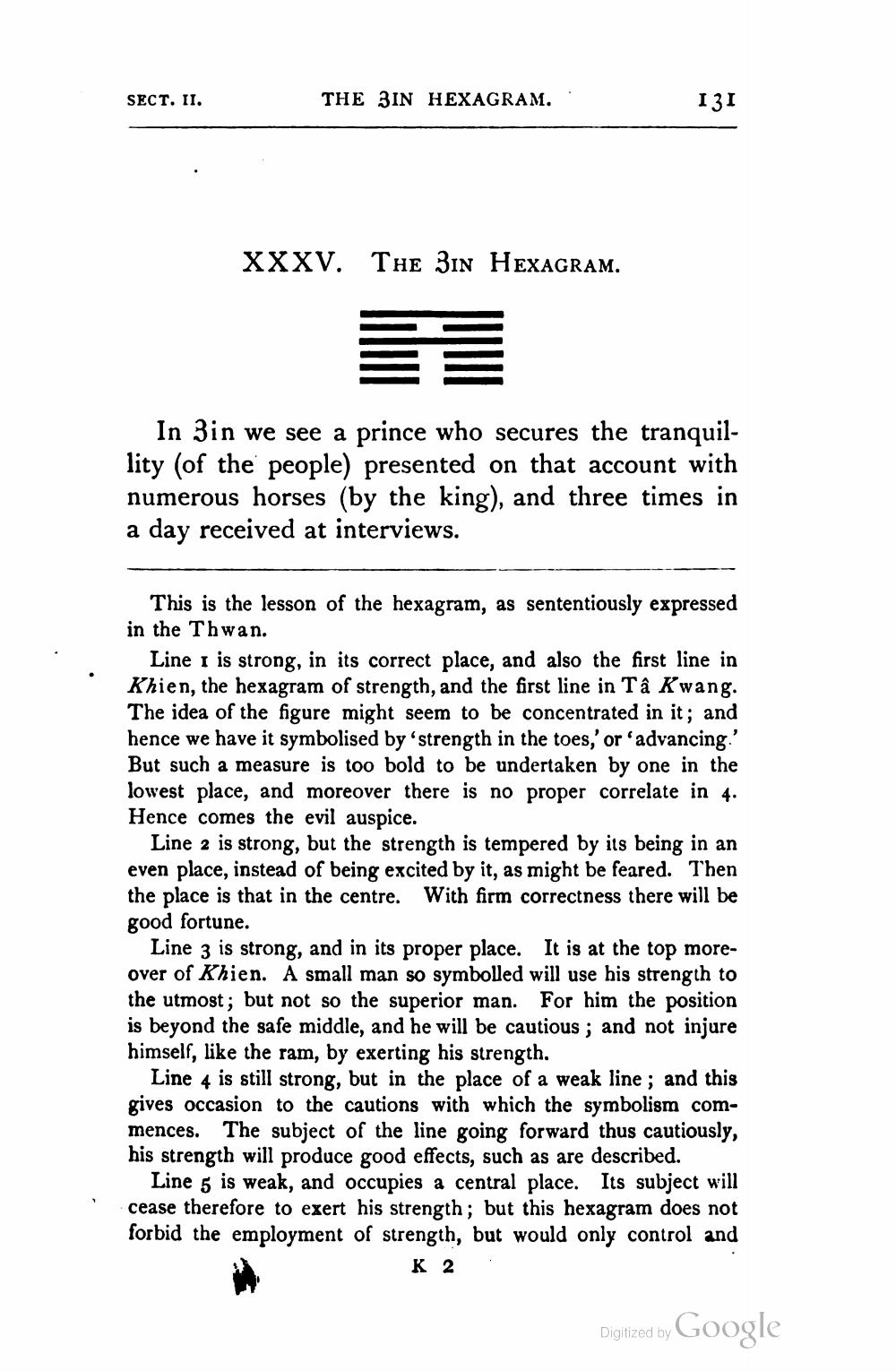________________
SECT. II.
THE ZIN HEXAGRAM.
131
XXXV. THE ZIN Hexagram.
In Zin we see a prince who secures the tranquillity (of the people) presented on that account with numerous horses (by the king), and three times in a day received at interviews.
This is the lesson of the hexagram, as sententiously expressed in the Thwan.
Line 1 is strong, in its correct place, and also the first line in Khien, the hexagram of strength, and the first line in Ta Kwang. The idea of the figure might seem to be concentrated in it; and hence we have it symbolised by strength in the toes,' or 'advancing.' But such a measure is too bold to be undertaken by one in the lowest place, and moreover there is no proper correlate in 4. Hence comes the evil auspice.
Line 2 is strong, but the strength is tempered by its being in an even place, instead of being excited by it, as might be feared. Then the place is that in the centre. With firm correctness there will be good fortune.
Line 3 is strong, and in its proper place. It is at the top moreover of Khien. A small man so symbolled will use his strength to the utmost; but not so the superior man. For him the position is beyond the safe middle, and he will be cautious; and not injure himself, like the ram, by exerting his strength.
Line 4 is still strong, but in the place of a weak line; and this gives occasion to the cautions with which the symbolism commences. The subject of the line going forward thus cautiously, his strength will produce good effects, such as are described.
Line 5 is weak, and occupies a central place. Its subject will cease therefore to exert his strength; but this hexagram does not forbid the employment of strength, but would only control and
K2
Digitized by Google




